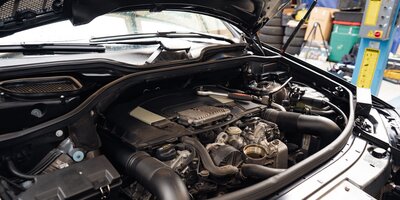ADDITIVES – THE ENVIRONMENTAL BENEFITS
Can additives contribute to improved air quality and help protect the environment?
Daily use and consequential wear, leads to the build-up of deposits such as carbon and gum in the fuel system and engine over time. Additives can help to tackle these problems to restore efficiency, enhance performance and lower fuel consumption. Once residues start to build up, performance starts to suffer and fuel consumption increases, due to the combustion process being affected.
And while the effects of increased pollution may be barely noticeable in terms of a single vehicle, the result in cities and places where vehicles amass is that pollution is concentrated. It is the concentration of wasted fuel and oil smoke entering the air that drastically reduces the air-quality in larger conurbations. Air pollution causes detrimental effects to health and increased disease, especially in vulnerable populations. Children, the elderly, and people living in areas with high levels of air pollution are especially susceptible.
Physical and psychological wellbeing is affected differently by the kind of air pollution we are exposed to. A number of organs and bodily functions can be harmed, the consequences include, respiratory disease, cardiovascular damage, fatigue and headaches, irritation of the eyes, nose and throat, damage to reproductive organs, harm to the liver, spleen and blood and the nervous system.
Choked engine components
When carbon, varnish and gum build up on the pistons, valve stems and countless other components, the components stop working as they should. The result is lower performance and increased emissions. Sticking piston rings caused by coke forming in the ring grooves even affects compression pressure. One way to remedy, or at least mitigate, the problem – without going to the expense and effort of stripping down the entire engine – is to use an engine oil flush. One application already dissolves many of the deposits, so that you can drain them out during the oil change.




Figure 1 – Piston covered with heavy carbon deposits
Figure 2 – Inlet valve face and head covered with carbon deposits
Figure 3 – Injector covered in carbon deposits
Fuel system components are also affected, with residues accumulating that curtail injector performance, which in turn leads to poor fuel economy and increased emissions.
Varnish and gum build up in the fuel lines, fuel pump, fuel injectors and carbon deposits form on the inlet valves. All of the components that deliver the fuel-air mixture no longer operate as they were designed to and thus emissions suffer as a result. The final price of failure to act is of course component replacement, which often causes far higher costs.
The cheapest and simplest way to tackle the problems of deposit accumulation is to use a system cleaner to remove the dirt and residue so that the vehicle produces as few emissions as possible. But it is not even just a case of protecting the environment or your fellow citizens, removing contamination from the engine and fuelling system also means you won’t have to keep filling up the fuel tank so often, saving you money straight away. And with fuel prices rising dramatically, there is no time like the present to treat your vehicle to a freshen-up.
You might also like

The modern marvel of an internal combustion motor powers our vehicles, providing the strength and reliability we rely on for daily transportation. However, just like anything else subjected to constant use, motorized units experience wear and tear over time. Component deterioration can significantly impact performance and longevity. In this article, we will delve into the intricacies of engine wear meaning, explore the various causes behind it, provide actionable tips to reduce and prevent it. Furthermore, we will look at how specialized engine oils, such as BIZOL, play a crucial role in safeguarding your engine’s health. Let’s begin by understanding what engine wear is and the factors that contribute to it.

The melodious purr of a motor, the velvety transition of cog-wheel, and the elegant voyage along the expansive highway — these are the unmistakable characteristics of a meticulously calibrated self-shifting gearbox system. But what transpires when the motorized ensemble falters, the cogs gnash, and the voyage veers into an unforeseen tempest? Get into the realm of automatic transmission problems, a domain where automotive aficionados and everyday motorists alike encounter the enigmatic intricacies of this complex system.

Driving is a blend of exhilaration and convenience, but sometimes, your trusty car can hit a snag. One of the most frustrating issues is a coolant leak.
Coolant, often referred to as the versatile 'antifreeze,' assumes the uncelebrated role of an automotive guardian, ensuring your engine's harmonious operation. This unassuming fluid stands as a bulwark against the scorching summer heat and the bone-chilling cold of winter. Nevertheless, when the vigilance of antifreeze wanes, and it embarks on an unauthorized journey beyond its confines, ominous troubles come into view.

